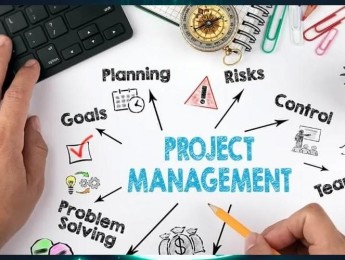Employee health and well-being should be a priority within any organisation, regardless of industry. However, organisations with greater physical risks, such as those in the industrial industry, should focus even more on maintaining employees' health and safety.
Ergonomics is understanding human well-being and behaviour and how these can be managed in the workplace. Labour-intensive jobs often come with high physical risk, so the organisation must be highly ergonomic competent to protect its employees.
A significant part of ergonomics is addressing the risk itself. Implementing effective risk management will allow the organisation to understand all potential risks and create necessary preventative measures and health and safety procedures to reduce potential harm before or during a risk occurrence.
Furthermore, ergonomics must also focus on the employees themselves. Providing quality tools, health and safety training, and stress reduction methods are vital factors in preserving their health and preventing potential risks.
Upon completion of this course, participants will be able to:
- Understand the importance of ergonomics within an industrial organisation.
- Acknowledge the consequences of a poor understanding of ergonomics.
- Ensure all organisation functions comply with relevant health and safety regulations.
- Conduct regular and thorough risk assessments to identify potential risks and implement a management plan.
- Comprehend basic aspects of human behaviour and navigate the potential of human error.
- Provide all employees coaching, mentoring, and training to develop skills and increase workplace safety knowledge.
- Acquire tools and equipment to aid in tasks and reduce the potential of injury.
This course is designed for anyone within the industrial industry responsible for managing ergonomics and maintaining employee health. It would be most beneficial for:
- HSE Officers
- Compliance Officers
- Operations Managers
- Ergonomic Advisors
- Risk Managers
- HR Personnel
- Senior Executives
This course uses a variety of adult learning styles to aid full understanding and comprehension. Participants will review real-world examples of established organisations to highlight their health and procedures and how they directly correlate to maintaining employee health and identify potential risks.
They will be allowed to partake in various learning methods and exercises to aid in knowledge development. This combination of methods includes seminars, discussions, video materials and group activities. This will guarantee the participants can develop a full and comprehensive understanding of the taught content and related practical skills.
Day 5 of each course is reserved for a Q&A session, which may occur off-site. For 10-day courses, this also applies to day 10
Section 1: Introduction to Ergonomics
- Defining what ergonomics is and how it can apply to an industrial organisation.
- Exploring what internal and external factors can influence ergonomics.
- Acknowledging the consequences of poor ergonomics.
- Investigating established organisations and their attitudes towards ergonomics and how that has led to success.
- Medical issues and conditions that can be a result of poor ergonomics – musculoskeletal disorders, cumulative trauma disorder and more.
Section 2: Risk Management
- The vitality of effective risk management within an industrial organisation.
- Conducting thorough risk and hazard assessments to identify all potential risks throughout the organisation.
- Analysing data collected from risk assessments to create a risk management plan detailing risks, preventative measures, and corrective actions.
- Ensuring all health and safety procedures are accessible and easily understood by all employees.
- Guaranteed that all business functions were compliant with relevant health and safety regulations.
Section 3: Employee Management
- Providing significant training to new hires and experienced employees to ensure a full understanding of risks and health and safety procedures.
- Encouraging an environment that’s knowledgeable of health and safety.
- Delegating tasks accordingly based on the employee's skills to prevent potential mistakes.
- Offering frequent coaching to employees who are lacking in certain competencies.
Section 4: Promoting Healthy Working Habits
- Analysing what situations lead to an increase in human error – stress, exhaustion, conflict and more.
- Investing in high-quality employee facilities to aid in stress reduction.
- Providing additional rewards and incentives for excellent performances.
- Establishing health-related benefits to help reduce injury potential, such as gym discounts, correct posture/handling techniques classes, and more.
- Ensuring all employees have significant time to rest between shifts or work weeks.
Section 5: Tools and Equipment
- Comprehending how the correct tools and equipment can significantly reduce injury potential.
- Designing unique tools to benefit specific tasks.
- Out-sourcing high-quality equipment that is guaranteed to benefit employees.
- Ensuring all employees have the correct training and certifications to utilise necessary tools and equipment.
Upon successful completion of this training course, delegates will be awarded a Holistique Training Certificate of Completion. For those who attend and complete the online training course, a Holistique Training e-Certificate will be provided.
Holistique Training Certificates are accredited by the British Assessment Council (BAC) and The CPD Certification Service (CPD), and are certified under ISO 9001, ISO 21001, and ISO 29993 standards.
CPD credits for this course are granted by our Certificates and will be reflected on the Holistique Training Certificate of Completion. In accordance with the standards of The CPD Certification Service, one CPD credit is awarded per hour of course attendance. A maximum of 50 CPD credits can be claimed for any single course we currently offer.
- Course Code PH1-121
- Course Format Classroom, Online,
- Duration 5 days














